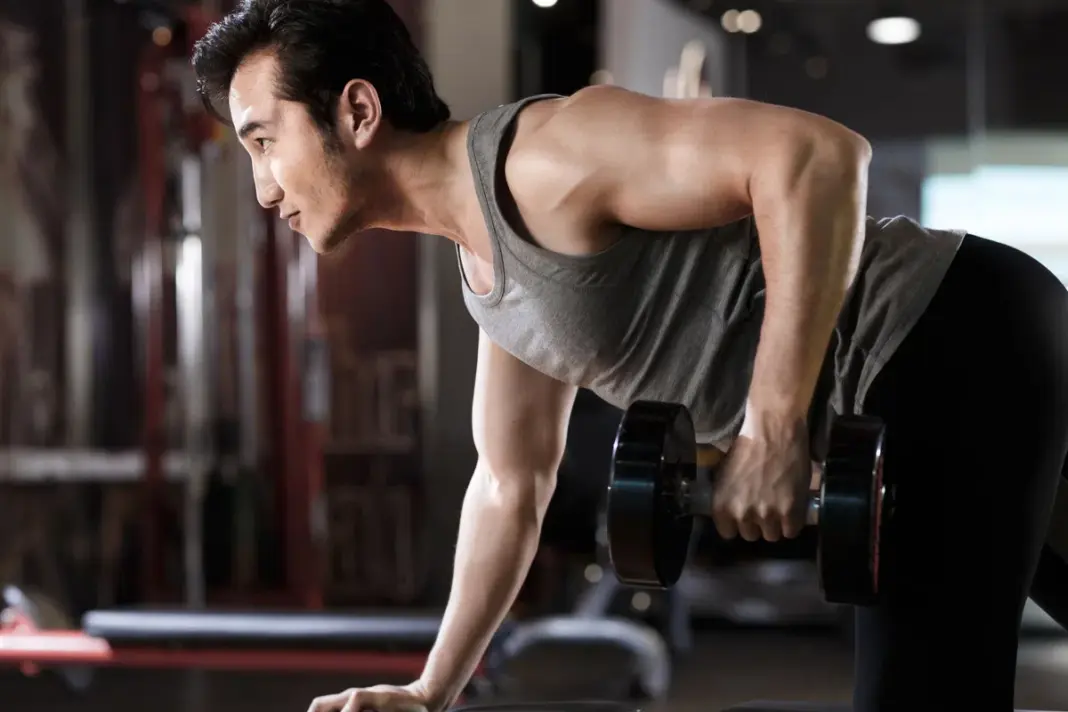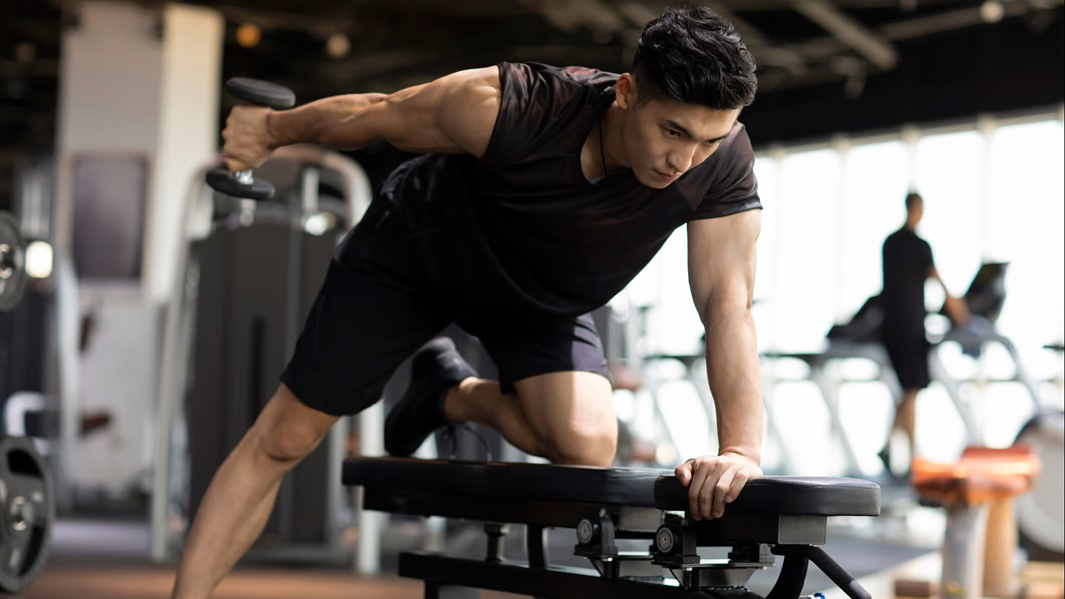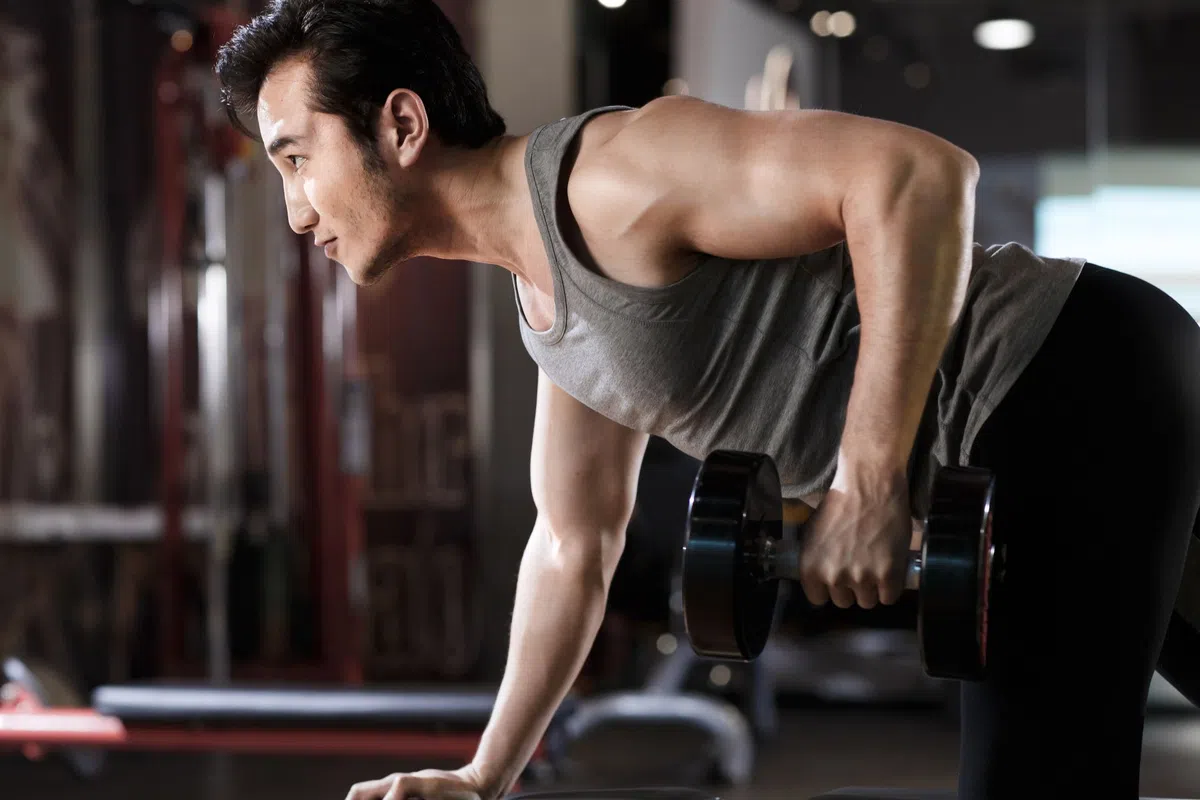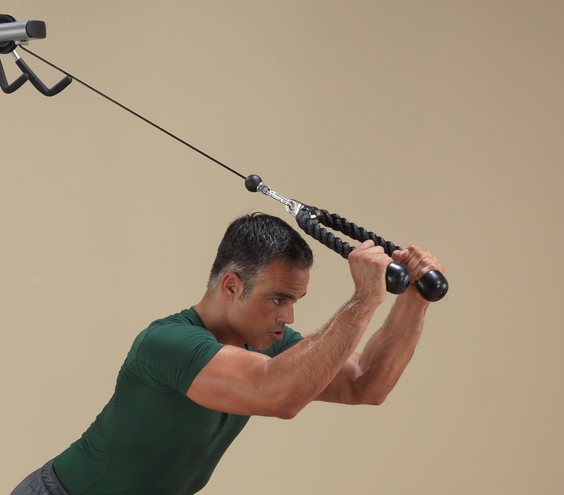Dumbbell Kickback: The Precision Sculptor of Triceps Shape and Definition
When it comes to carving detail and definition into your triceps, few movements deliver like the Dumbbell Kickback. While big compounds like dips and close-grip presses build mass and strength, the kickback is the finishing tool — the sculptor’s chisel that sharpens the long head, brings out separation, and gives that “horseshoe” triceps look bodybuilders chase.
For many, kickbacks are dismissed as too light or “fluffy.” But when performed with strict form, full range of motion, and controlled tempo, this isolation exercise becomes a precision weapon — forcing deep contraction and time under tension where heavier presses can’t reach.
Let’s break down exactly how to use Dumbbell Kickbacks to build aesthetic, complete triceps — with form mastery, programming tips, and strategies for lifters of every level.
Muscles Worked
Primary:
- Triceps brachii — especially the long and lateral heads
Secondary:
- Posterior deltoid (stabilization)
- Forearm extensors
- Core (bracing and posture support)
👉 The long head of the triceps — the largest and most visible section — is maximally engaged when the arm is extended behind the torso, making kickbacks one of the few movements that fully contract this muscle under load.
Why the Dumbbell Kickback Deserves Respect
- Peak Contraction Isolation
- Few exercises allow such pure lockout tension. The kickback keeps the triceps under full contraction when the elbow is fully extended — exactly where growth signals peak.
- Shape and Definition
- While compounds build size, isolation like kickbacks refines detail — giving your triceps that “3D” roundness from all angles.
- Mind-Muscle Connection Builder
- Because the load is lighter, you can focus intensely on form and contraction. Perfect for improving control and establishing neural connection with the triceps.
- Joint-Friendly Finisher
- Minimal shoulder and elbow stress when performed correctly, making it great for volume and burnout work.
- Accessibility
- Requires only dumbbells, making it easy to integrate into any home or gym setup.
Proper Form: Dumbbell Kickback (Single-Arm Version)
Setup
- Positioning
- Hold a dumbbell in one hand and place your opposite knee and hand on a flat bench for support.
- Maintain a neutral spine — no rounding or arching.
- Keep your working arm close to your torso with your elbow bent at 90°.
- Grip and Alignment
- Use a neutral grip (palm facing inward).
- Your upper arm should be parallel to your torso — this alignment is key for proper triceps engagement.
Execution
- Starting Position
- Elbow bent, dumbbell hanging straight down, upper arm parallel to torso.
- Concentric (Extension)
- Exhale and extend your elbow, moving the dumbbell backward in a smooth arc until your arm is straight.
- Squeeze the triceps hard at the top — imagine “locking out” against resistance.
- Peak Contraction Hold
- Pause for 1–2 seconds at full extension to maximize tension.
- Eccentric (Lowering)
- Inhale and slowly return the dumbbell to the starting position under control — avoid letting it drop.
Key Technique Cues
✅ Keep your upper arm stationary — only your forearm should move.
✅ Maintain a neutral spine and tight core.
✅ Don’t swing the dumbbell — control every inch.
✅ Focus on full elbow extension — that’s where the long head contracts fully.
✅ Pause briefly at the top to eliminate momentum and enhance contraction.
Common Mistakes and Fixes
| Mistake | Problem | Fix |
| Swinging the dumbbell | Uses momentum, removes tension from triceps. | Slow the tempo, shorten the range if needed. |
| Dropping the elbow during the rep | Reduces tension on the triceps. | Keep elbow fixed, parallel to torso. |
| Using too much weight | Forces shoulder and back involvement. | Go lighter and focus on control. |
| Cutting range of motion short | Misses peak contraction. | Fully extend elbow behind body. |
| Arching or twisting the torso | Reduces isolation and adds injury risk. | Brace core and keep body stable. |
Variations
- Two-Arm Dumbbell Kickback
- Performed standing or bent-over; works both triceps simultaneously but requires good balance.
- Cable Kickback
- Provides constant tension through the entire range — great for hypertrophy.
- Incline Bench Kickback
- Resting chest on a bench removes momentum and isolates the triceps even further.
- Resistance Band Kickback
- Portable and joint-friendly; perfect for home or travel training.
- Kettlebell Kickback
- The offset load challenges stability, improving control and contraction.
Programming Guidelines
For Hypertrophy (Size and Shape)
- Sets: 3–4
- Reps: 12–15
- Rest: 45–75 seconds
- Tempo: 2-second raise, 2-second hold, 3-second lower
- Goal: Max tension and time under load for detailed growth.
For Strength / Control Development
- Sets: 3
- Reps: 10–12
- Rest: 60–90 seconds
- Goal: Moderate load, clean execution, and consistent contraction.
For Endurance / Finishing Burnouts
- Sets: 2–3
- Reps: 15–20+
- Rest: 30 seconds
- Goal: Pump and metabolic fatigue to fully exhaust the triceps.
Integrating Dumbbell Kickbacks into Your Program
Example Arm Day
- Close-Grip Bench Press – 4×6
- Skullcrusher – 3×10
- Overhead Dumbbell Extension – 3×12
- Rope Pushdown – 3×12–15
- Dumbbell Kickback – 3×15–20 (final burn)
Example Push Day
- Bench Press – 4×6
- Overhead Press – 3×8
- Weighted Dips – 3×10
- Rope Pushdown – 3×12
- Kickbacks – 3×15
Example Superset
- Rope Pushdown – 12 reps
- Kickback – 15 reps (immediate)
- Rest 60 seconds and repeat 3–4 times for an insane finishing pump.
Advanced Training Techniques
- Iso-Hold Kickbacks
- Hold the top contraction for 5 seconds on the last rep of each set to maximize tension.
- Slow Negatives
- Take 3–4 seconds to lower the dumbbell — emphasizes the eccentric phase for more growth.
- 1½ Reps
- Extend fully, lower halfway, then re-extend. Counts as one rep; doubles time under tension.
- Drop Sets
- After failure, immediately reduce weight by 20–30% and continue repping to burnout.
- Partial Reps at End Range
- Perform short-range pulses at the top to extend the contraction phase.
Bodybuilder’s Tips
💡 Use Light to Moderate Weight: Heavy dumbbells destroy form — the key here is precision.
💡 Keep Elbow Still: Movement should hinge only at the elbow joint.
💡 Full Lockout: Don’t stop short; the last 10° of extension make the difference.
💡 Mind-Muscle Connection: Visualize your triceps flexing at the top — this is where growth happens.
💡 Include Kickbacks Last: Perfect for finishing after heavy compounds or pushdowns.
Strength vs Aesthetics
| Focus | Training Style | Benefit |
| Strength | Moderate load, slower tempo (8–10 reps) | Improves elbow stability and triceps control |
| Aesthetics | Light load, high reps (12–20) | Sharpens shape and enhances muscle detail |
| Endurance / Pump | Ultra-high reps or drop sets | Builds vascularity and capillary expansion |
Common Pairings
Kickbacks shine when used as finishers or superset companions:
- Superset with Overhead Extensions to hit long head through both stretch and contraction.
- Pair with Rope Pushdowns for a double-dose of isolation.
- Finish a heavy push session with 3 rounds of Kickbacks + Close-Grip Push-Ups for maximum pump.
Safety and Form Maintenance
- Always warm up elbows with light pushdowns or mobility work.
- Choose a controlled tempo — no jerking or swinging.
- Maintain shoulder stability to avoid impingement.
- Focus on form and contraction rather than load progression.
Practical Takeaways
✅ Think of kickbacks as precision isolation, not a heavy lift.
✅ Prioritize control, contraction, and tempo over load.
✅ Keep your upper arm locked — your elbow is the only hinge.
✅ Train them at the end of your triceps workout for best effect.
✅ Combine with heavier presses to build both mass and definition.
Conclusion
The Dumbbell Kickback may not be the flashiest exercise in your arsenal, but it’s one of the most effective finishing tools for developing fully shaped, aesthetic triceps.
It targets the long head where it matters most — the peak of contraction — and transforms raw muscle into balanced, defined arms.
For bodybuilders, this is the detailing work that completes the look. For athletes, it’s a way to strengthen the triceps through its full contractile range, improving control and endurance.
Performed with precision and intent, the Dumbbell Kickback becomes far more than an accessory — it’s the final polish that turns strong arms into sculpted ones.
Light weight. Full control. Max contraction. That’s the art of the kickback.






